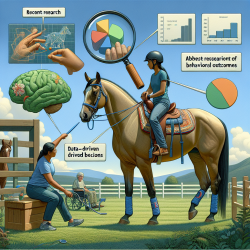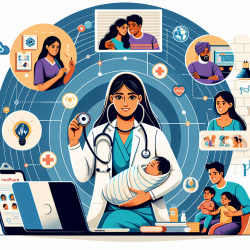Introduction
At TinyEYE, we are committed to using data-driven decisions to create the best outcomes for children. While our primary focus is on speech-language pathology, we also recognize the value of interdisciplinary research in enhancing our practice. Today, we delve into a study titled "A Mobile App to Improve Self-Management of Individuals With Type 2 Diabetes: Qualitative Realist Evaluation" published in the Journal of Medical Internet Research. This research offers valuable insights that can help practitioners improve their skills and outcomes by leveraging mobile technology.
Key Findings
The study evaluated a mobile app designed to improve self-management in individuals with Type 2 Diabetes Mellitus (T2DM). The app provided tailored messaging, data tracking, and performance feedback to help users manage their condition. The researchers identified three distinct groups based on their engagement and outcomes:
- The Easiest Fit: High self-efficacy, motivated, and engaged early adopters who showed significant improvements in HbA1c levels.
- The Best Fit: Moderate self-efficacy, slow adopters who also showed significant improvements but required more time and support.
- Low Engagers: Low self-efficacy, multiple competing priorities, and minimal engagement, resulting in no significant improvements.
Implications for Practitioners
Understanding these findings can help practitioners tailor their approaches to different patient needs. Here are some actionable insights:
1. Assess Self-Efficacy
Before recommending a mobile app or any self-management tool, assess the patient's self-efficacy. High self-efficacy individuals are more likely to benefit from these tools. For those with low self-efficacy, additional support and interventions may be required.
2. Identify Competing Priorities
Patients with multiple competing priorities may struggle to engage with self-management tools. Practitioners should work with these patients to identify and mitigate these barriers, possibly through more personalized and flexible interventions.
3. Provide Tailored Support
Tailored messaging and performance feedback were crucial in helping patients manage their condition. Practitioners should ensure that any digital tools they recommend offer these features. Additionally, regular follow-ups can help sustain engagement and address any emerging issues.
Encouraging Further Research
While this study provides valuable insights, it also highlights the need for further research. Practitioners should consider participating in or supporting studies that explore the long-term effectiveness of mobile apps in managing chronic conditions like T2DM. This will not only contribute to the body of knowledge but also help refine and improve existing tools.
Conclusion
The integration of mobile technology in healthcare offers promising avenues for improving patient outcomes. By understanding the key factors that influence engagement and success, practitioners can make more informed decisions and provide better support to their patients. To read the original research paper, please follow this link: A Mobile App to Improve Self-Management of Individuals With Type 2 Diabetes: Qualitative Realist Evaluation.










